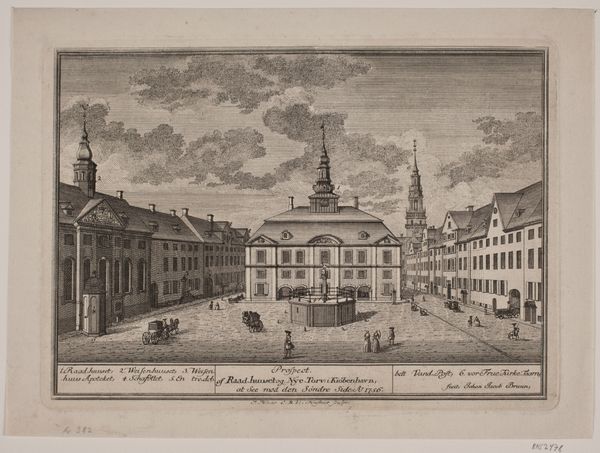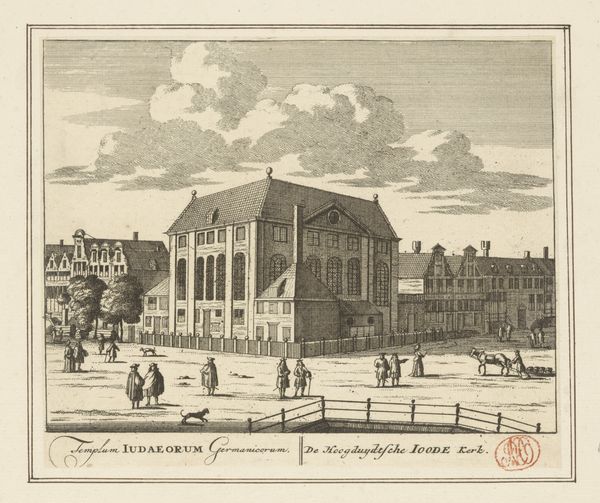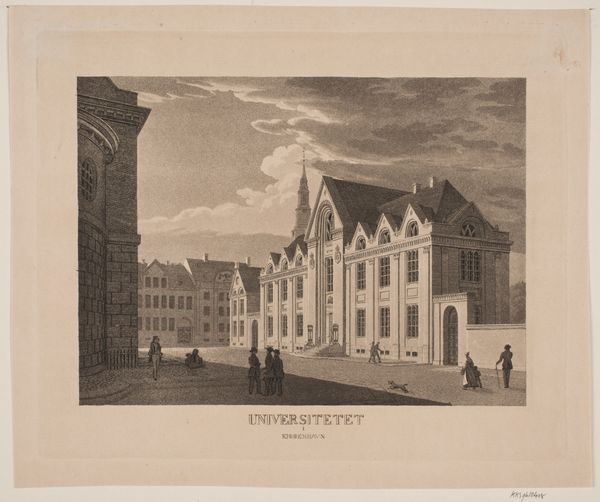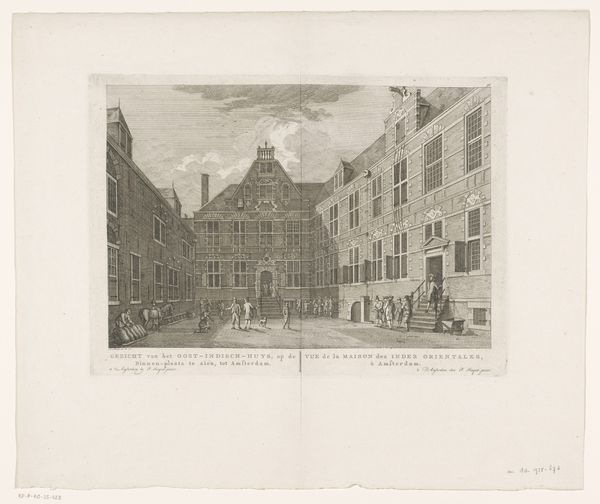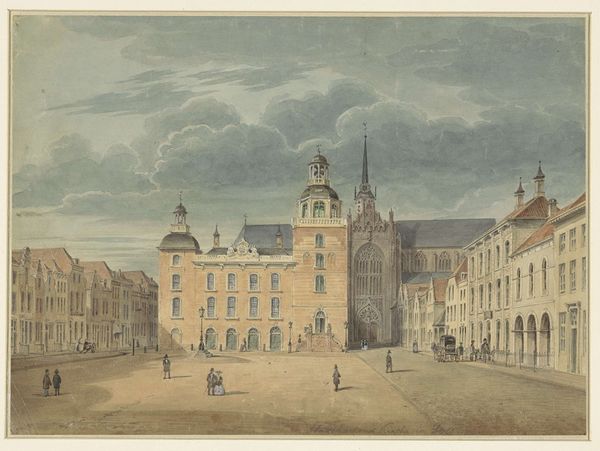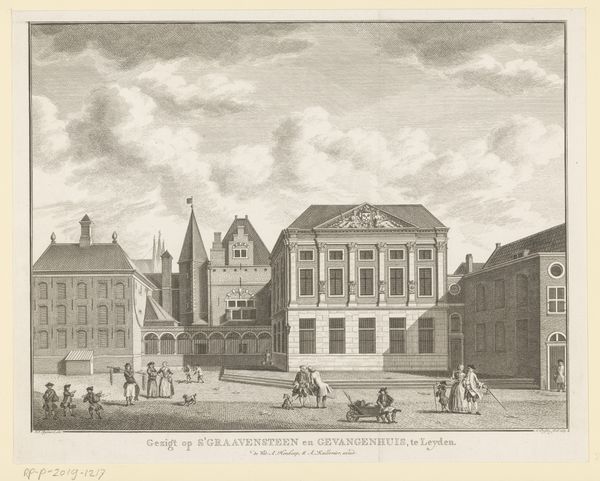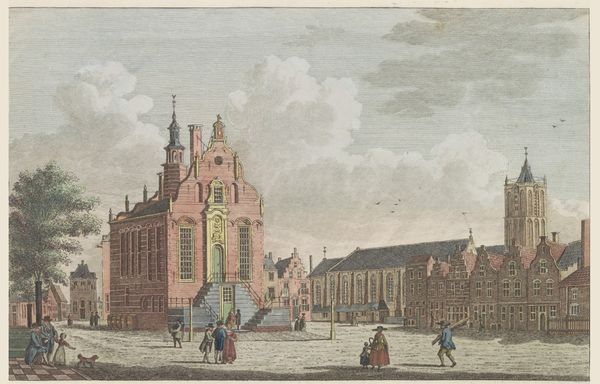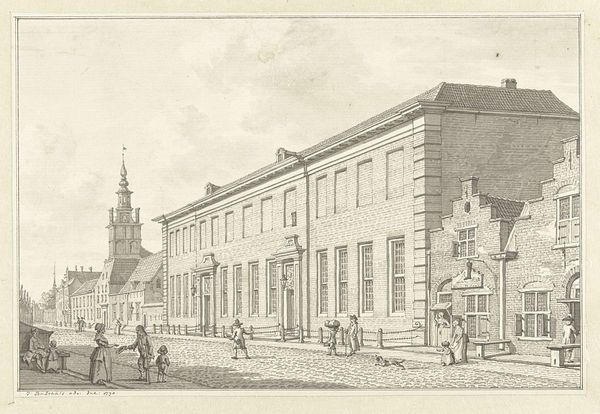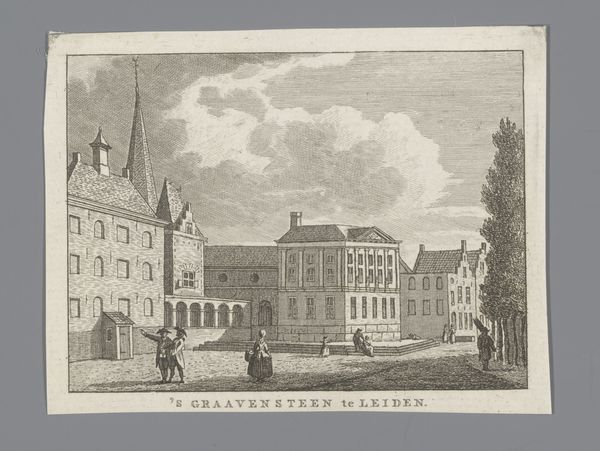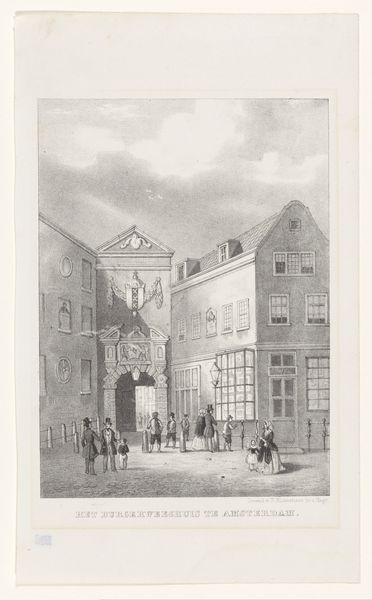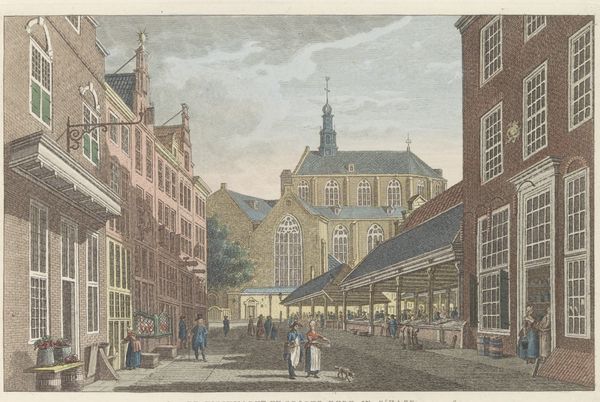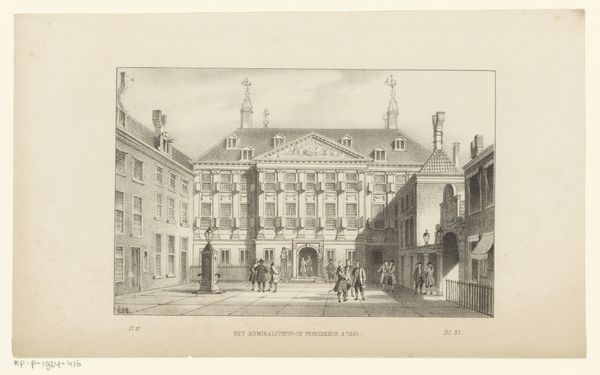
#
aged paper
#
toned paper
#
light pencil work
#
photo restoration
#
parchment
#
old engraving style
#
retro 'vintage design
#
personal sketchbook
#
watercolour illustration
#
watercolor
Dimensions: height 170 mm, width 256 mm
Copyright: Rijks Museum: Open Domain
Curator: Immediately, I notice a kind of sepia tone, giving it an antique feeling, as though glimpsing into history. Editor: Indeed. What we’re looking at is titled "Paushuize te Utrecht," made around 1859-1860. This watercolor and pencil work offers a slice of Utrecht's architectural fabric during that era, and it’s currently held at the Rijksmuseum. Curator: The composition feels incredibly balanced, doesn't it? The building in the center, meticulously detailed, creates this stable, almost stately presence, offset by the street scenes and townspeople. It has a strong feeling of curated order. Editor: Absolutely. That “Paushuize,” or "Pope's House", held significant religious and political importance. Originally built in the early 16th century for the only Dutch Pope, Adrian VI, the building stood as a symbol of religious power. Viewing this artwork lets us engage with Utrecht's religious history and, importantly, with how buildings get commemorated and how these representations gain traction through images. Curator: The artist uses watercolor washes to soften the harsh lines of the architecture, yet also includes very controlled pencil lines and subtle light, giving it both an ethereal and grounded feeling, contrasting old construction with lived urban experience. What I think is fascinating is the way the light plays across the facades, which adds a certain vivacity, despite the piece being monochromatic. Editor: It's important to think about what such imagery accomplished at this time. The rise of urbanism shaped collective memories of public and religious life through the medium of landscape images. The "Paushuize" image participates in creating a common feeling and understanding of local experience, in conjunction with developing architectural conservation projects across Europe and beyond. Curator: Reflecting on it, I'm drawn to how the image's muted palette makes the scene appear timeless, while that aged paper reminds us that even permanence is fleeting. Editor: Right. This work reminds us of the intertwining stories told through buildings and their imagery; its legacy shaped both the material world and in the construction of our common culture.
Comments
No comments
Be the first to comment and join the conversation on the ultimate creative platform.
